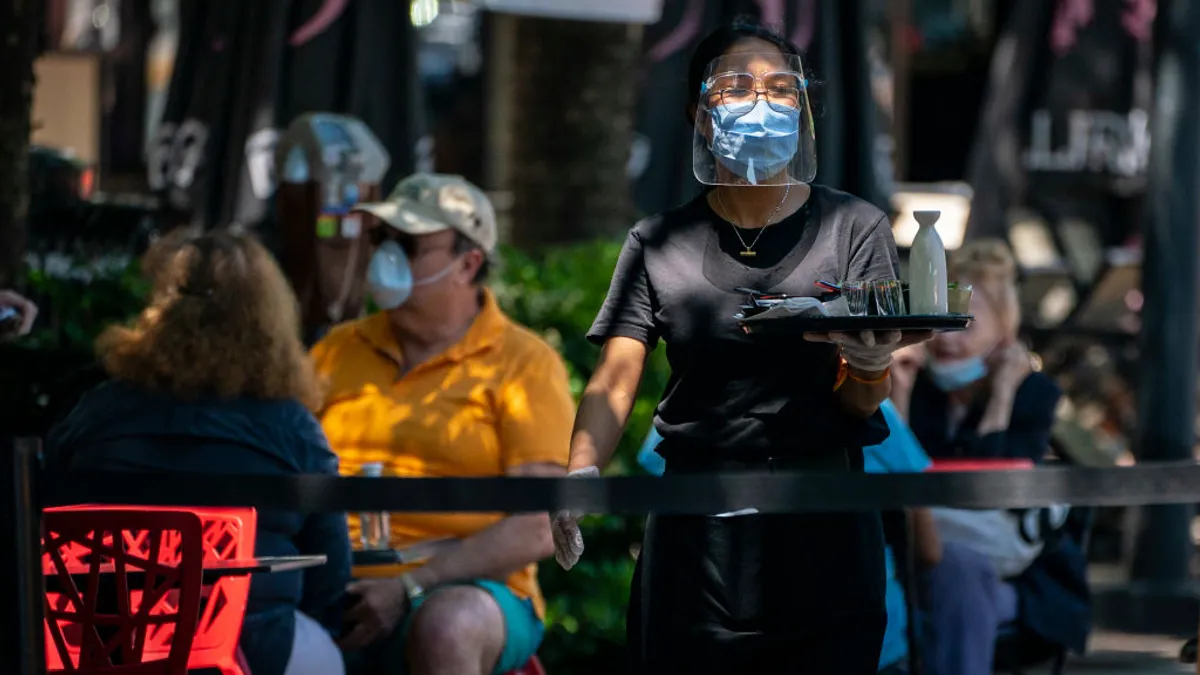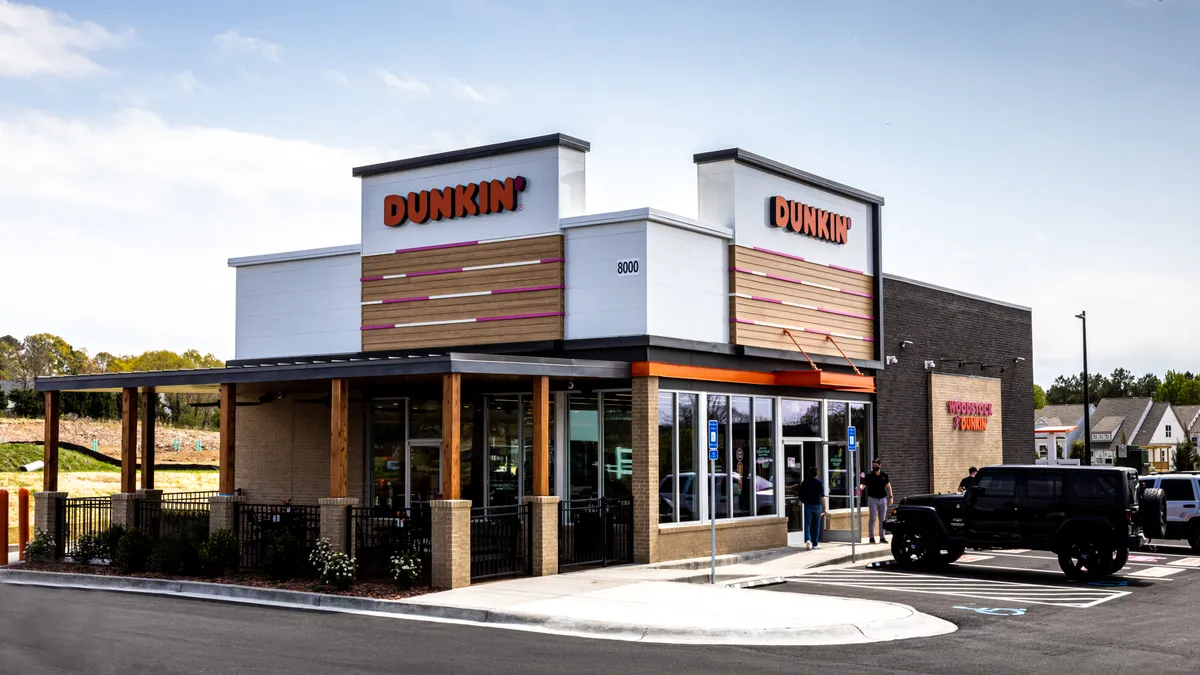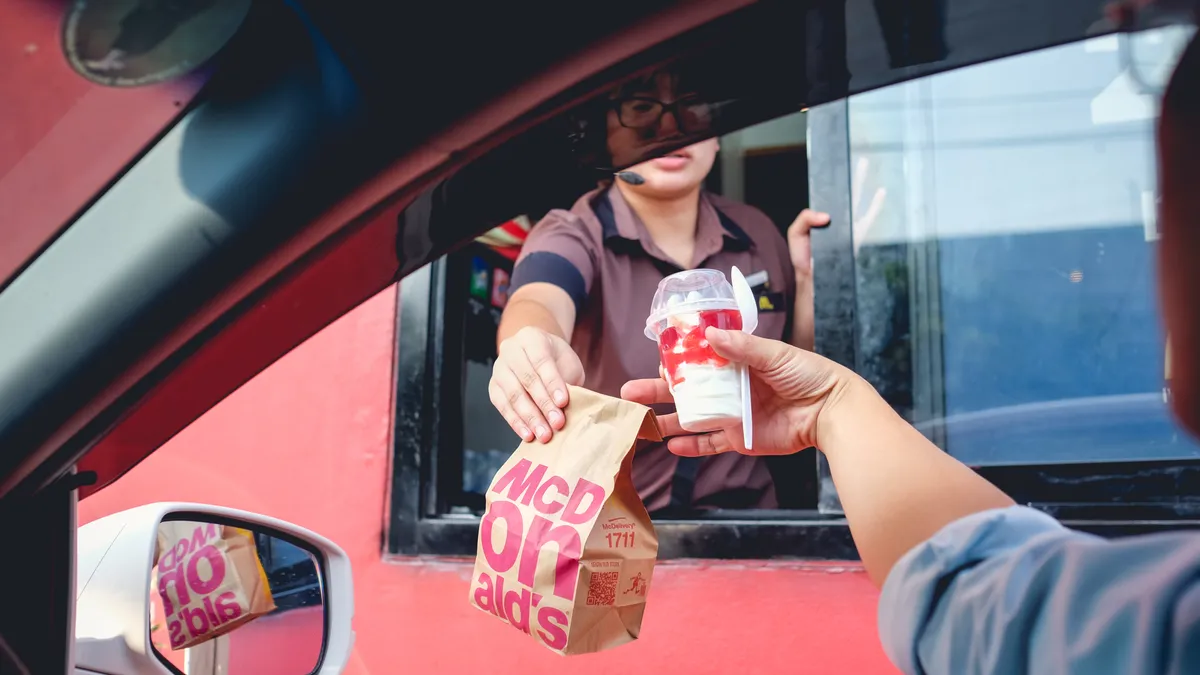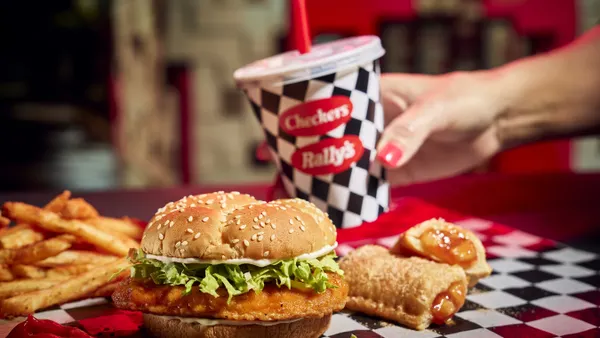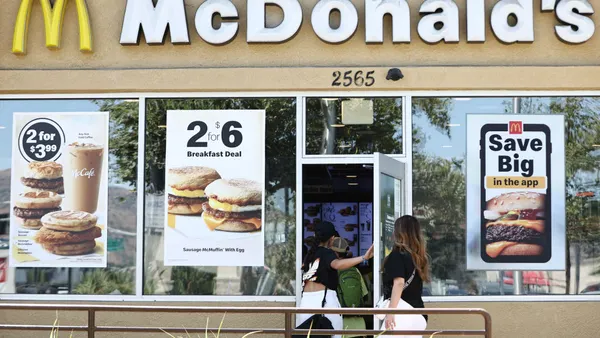Dive Brief:
- On-premise dining sales increased 70% in Q4 2021 versus Q4 2020, new research from restaurant management software company Toast shows.
- The return to on-premise dining lifted full-service restaurant sales 55% in Q4 2021 compared to the same period in 2020, according to the report emailed to Restaurant Dive. Comparatively, quick-service restaurant sales grew 30% during that timeframe.
- Tipping has also increased throughout the pandemic, with 58% of consumers reporting they have increased the amount they typically tip servers since 2020, according to Popmenu. Toast's data shows tipping increased 19% in Q4, a nearly 1% increase from Q4 2020.
Dive Insight:
Though Toast's data shows an encouraging recovery for the full-service restaurant segment at the end of 2021, the omicron COVID-19 variant may have reversed some of those gains in the winter. Nearly 90% of restaurants experienced a decline in customer demand for indoor dining because of the variant's impact, according to the National Restaurant Association.
Recent data from The NPD Group shows the full-service segment actually lags behind QSRs in terms of traffic recovery, with QSRs down just 1% in 2021 versus 2019, and full-service traffic was down 16% during that time.
Pent-up diner demand is strong and, after a mid-January peak, omicron cases are plummeting across the country. This could mean the "post-vaccination" rebound, as Toast calls it, may return.
The full-service segment's recovery may improve if expanded outdoor dining becomes permanent in major cities, like New York City, which is considering a permanent outdoor dining program. Full-service concepts may also get a boost as cities like Chicago, Philadelphia and San Francisco drop mask and vaccination mandates for indoor dining. Vaccination mandates especially have discouraged some customers from dining out.
Still, restaurants will have to continue navigating serious labor challenges, which have caused more than half of all restaurants to trim operating hours. High turnover, low job growth and rising wages have been shaping the labor market since summer 2021.
Full-service restaurants have been hit particularly hard by the market's labor instability. These restaurants work with 6.2 fewer employees in the kitchen than they did in 2019, and 2.8 fewer front of house employees, according to Black Box Intelligence.
Workers have cited harassment as a reason for leaving the industry, according to surveys published by One Fair Wage. If relaxed public health measures decrease customer harassment without increasing caseloads, restaurants may see a marginal improvement in retention. Employees also cited the desire for higher pay as a reason they would stay in foodservice. Despite diners' increasing generosity, higher tips — and historically high wages in the industry — haven't proven a silver bullet for retention, and labor will likely continue to be a major pain point as as inflation eats into wage gains.


